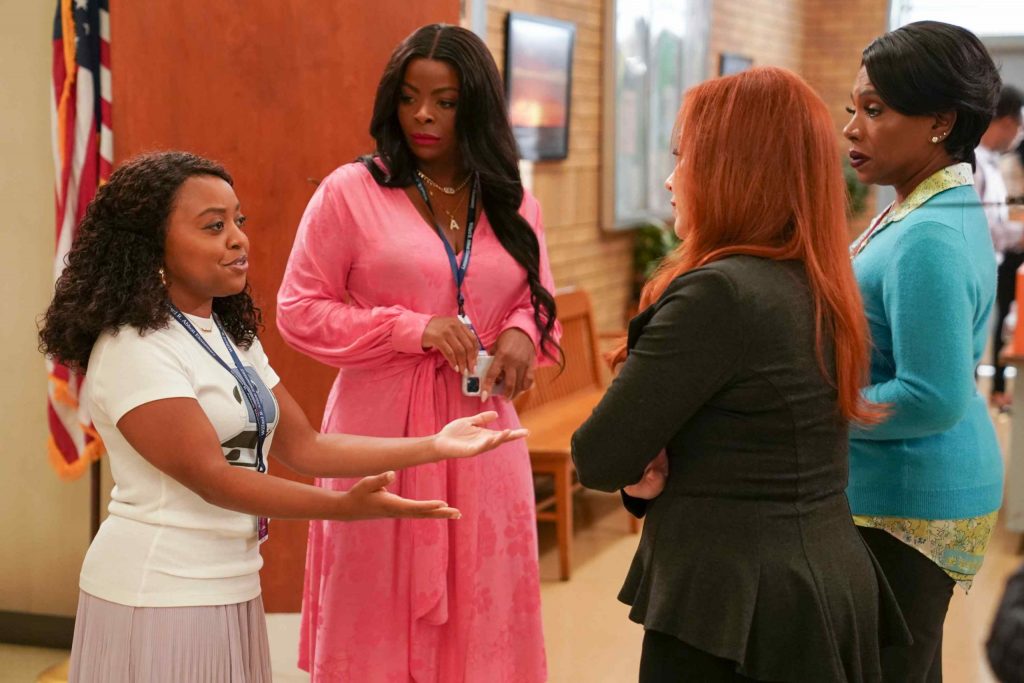To write a good Pilot, you need to KNOW YOUR SHOW. Unlike a movie, you’re setting up stories that could go on for 20, 40, or maybe even 100 episodes. (Or if you’re The Simpsons, you’re looking at 732 episodes… but we’ll set our sights a little lower for now.) If you don’t know where your show may be going, it’s hard to know the first step. In this article, we’ll cover how to write a TV pilot using one of our favorite examples: the Abbott Elementary pilot.
How To Write a TV Pilot: The Abbott Elementary Pilot
Writing a Pilot is HARD. You need to establish and HOOK your audience in 30 or 60 minutes (or even less time if it’s for commercial television) while making your audience want to come back for more.
So you may be wondering, what are the key elements to focus on when developing a TV pilot?
We recommend starting with the:
- Characters
- World Building
- Story Engine
Keep in mind all of these three major elements overlap with each other. The characters not only have relationships with one another but also with their surrounding world. And the story engine, which provides show material for many potential plotlines, benefits immeasurably from interesting characters and a unique setting. All three of these elements can show a reader or audience that you have a handle on your first episode AND know where the show could go for many episodes to come.
The World of Abbott Elementary
For this article, we’ll be focusing on the world of ABBOTT ELEMENTARY. This show came out of the starting gates strong, with a pilot that immediately captured its unique tone and a wonderful ensemble of educators trying their best to elevate the students. Note: The show won an Emmy for its star/creator Quinta Brunson.

Characters
The wide array of characters working at Abbott Elementary helps provide the show with humor and heart. At the start of the series, Janine’s only been teaching for one year and has not yet lost the optimism that things can get better. Her colleagues include the stern veteran teacher Barbara, the attention-seeking principal Ava, and the wild card Melissa (who has a way to get anything – if you don’t ask how).
Story Engine
Perusing the episode summaries gives you a glimpse into what makes the story engine of Abbott Elementary work so well. From receiving negative reviews online to dealing with the dangers of a new viral internet trend to the ongoing stress of their limited budgets, the teachers of Abbott have their hands full every week. A story engine also necessitates an interesting and well-defined world for the show, which Abbott Elementary pulls off so well from the very first moments of the pilot.

World Building
The world of Abbott Elementary is not set in the hereafter (The Good Place) or a mysterious island (Lost). It’s based on real elementary schools in the very real world of Philadelphia. What made this show a breakout hit was how well it captured the details and personality of its world. The decision to use the mockumentary style only adds to the world-building by the show’s creator Quinta Brunson and all the writers of Abbott Elementary.
The talking head interviews and cutaways – popularized in shows like The Office – make us feel like this is not a TV show but a glimpse into the lives of real people. It also adds to the humor of the storytelling, often inserting a poker-faced irony into situations that could come off as rather dramatic.
One of the smartest choices in the pilot was using the classroom rug as a tangible symbol of the problems these teachers face. Janine watches in horror as one of her young students relieves himself on the story-time rug. His excuse: the toilets aren’t working.

She proceeds to go on an odyssey to acquire a new rug, one that throws her into the heart of the school’s financial problems. The classroom equipment is out of date, necessitating Janine to paste pictures of recent presidents into their VERY old textbooks. Each class has too many students, with nowhere near the resources needed to give these students what they deserve. The city claims it doesn’t have the budget yet manages to provide the Philadelphia Eagles unlimited funds to renovate their stadium.
She tries to rally the other teachers but runs into the proverbial wall of the more veteran teachers. They know that things almost never improve, so they have chosen to make do with what they already have. Janine, on the other hand, is still new to the game, refusing to take no for an answer. When Ava, the principal, reveals that she opted to spend their surplus on a massive new poster prominently featuring herself, Janine is crestfallen. Her dream of a new rug seems to have gone up in smoke. Enter her crafty, seen-it-all colleague Melissa. One call to her anonymous buddy working at the football stadium and VOILA – several new rugs are delivered, all adorned with the Eagles logo.

By the end of the pilot (which clocks in at only 22 minutes), we see and, more importantly, FEEL the joys and pains of Abbott Elementary’s world. As the ratings and Emmys success demonstrates, the show has an audience of millions wanting to return to this school every week: The ultimate goal of any TV show.
Learn How to Write a Pilot at NYFA
Learning how to write a pilot that is memorable and engaging is one of the most important skills an aspiring television writer can develop. In the screenwriting programs at NYFA, students learn fundamental concepts and techniques for writing a pilot and television, such as structure formats, story engines, dialogue, themes, season arcs, show types, WGA format, subtext, and much more. To learn more about our programs, please visit our Screenwriting School page.
